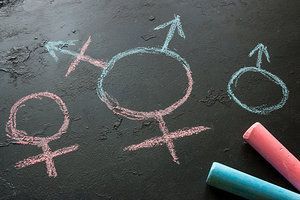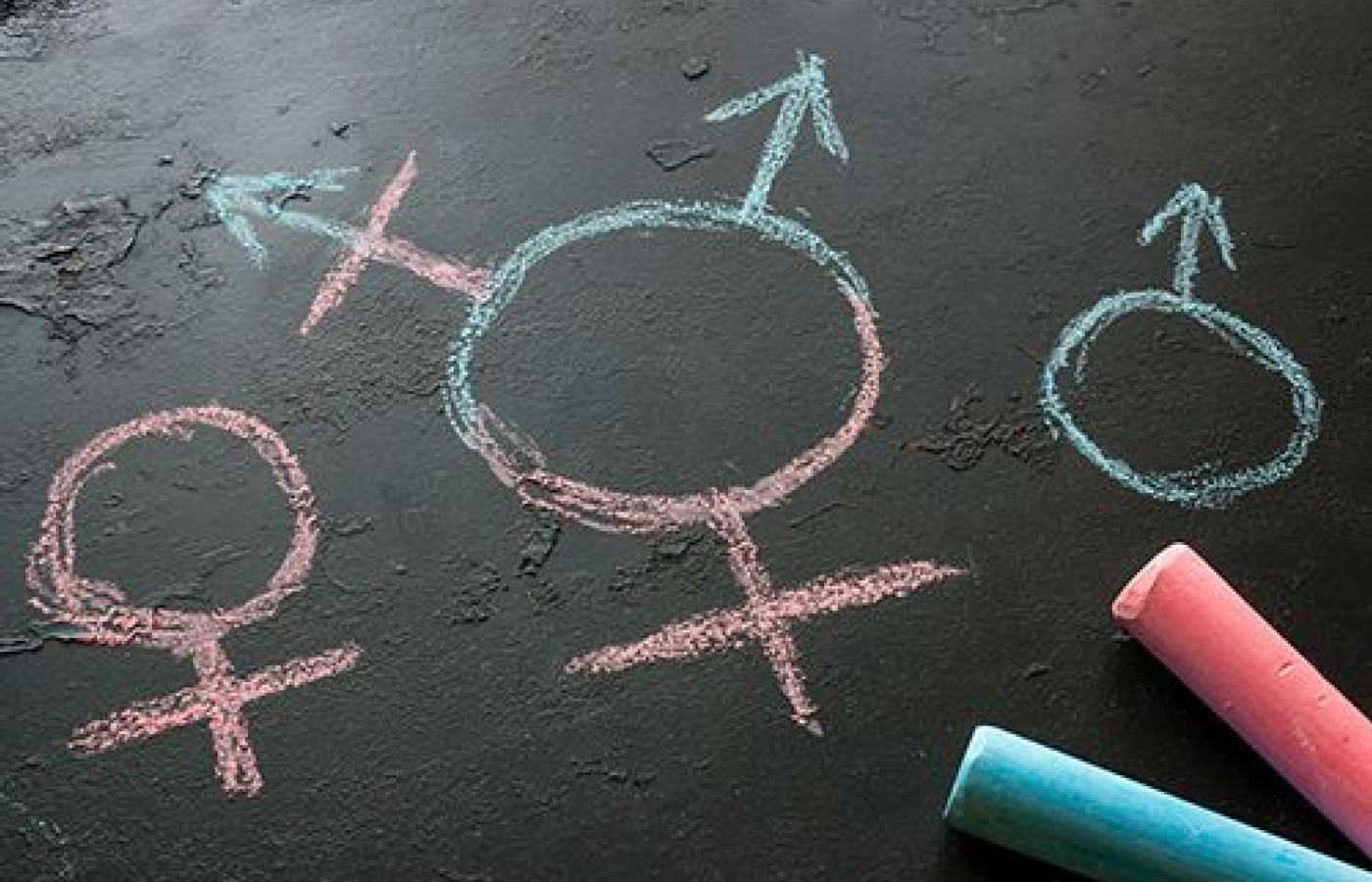Whether you accept it, avoid it or live somewhere in between, insurance coverage has become a defining issue for our profession. Patients increasingly expect to use their benefits, practitioners want to be compensated fairly for their time and expertise, and the system itself remains – at best – fragmented. The encouraging news is that coverage has expanded in meaningful ways. The challenging news is that reimbursement, across the board, remains inadequate.
Gender—East & West Perspectives
Have you filled out that form yet? It's popping up everywhere. The one that gives you three options in defining your gender: male/female/unspecified.
The Western View
What defines being a man or women is being questioned. "The idea that a person's sex is determined by their anatomy at birth is not true, and we've known that it's not true for decades," said Dr. Joshua D. Safer, an endocrinologist and executive director of the Center for Transgender Medicine and Surgery at Mount Sinai Health System in New York.1 But what does determine gender identity — a person's powerful, core knowledge of who they are — is not yet clear.
"We know that there is a significant, durable, biological underpinning to gender identity," Dr. Safer said. "What we don't know are all of the biological factors at play. As we, in the mainstream biological-medical community, understand it in 2018, it is hard-wired, it is biological, it is not entirely hormonal, and we do not have identified genes, so we cannot specifically say it is genetic."1
Understanding the Terms

Cisgender is the term relating to a person whose sense of personal identity and gender corresponds with their birth sex. Transgender is the experience, or identification with a gender different to the assigned biological sex, whilst gender dysphoria (GD) is the distress experienced by transgender people, and may be present from a very young age. The Williams Institute says there are nearly 700,000 people living publicly as transgender in the U.S.2 Millions more live in other countries. Some say they are the opposite sex of what they were assigned at birth. Some feel they are both male and female. Still others don't identify as either gender.
Helen R. Friedman, PhD, a clinical psychologist in St. Louis who specializes in gender identity and transgender issues states, "The truth is, gender does exist on a continuum." Meaning, there's a lot of in-between.3
Dr. Julie Bakker from the University of Liège in Belgium presented at the annual meeting of the European Society of Endocrinology in May 2018. "Although more research is needed, we now have evidence that sexual differentiation of the brain differs in young people with GD, gender related distress, as they show functional brain characteristics that are typical of their desired gender."
What the Studies Report
Multiple studies concluded that brain activity and structure in transgender adolescents more closely resembles the typical activation patterns of their desired gender. The findings suggest that differences in brain function may occur early in development and that brain imaging may be a useful tool for earlier identification of transgenderism in young people.
Spanish investigators—led by psychobiologist Antonio Guillamon of the National Distance Education University in Madrid, and neuropsychologist Carme Junqu Plaja of the University of Barcelona—used MRIs to examine the brains of 24 female-to-males, and 18 male-to-females—both before and after treatment with cross-sex hormones.
Their results, published in 2013, showed that even before treatment the brain structures of the trans people were more similar in some respects to the brains of their experienced gender than those of their natal gender. "Trans people have brains that are different from males and females, a unique kind of brain," Guillamon says. "It is simplistic to say that a female-to-male transgender person is a female trapped in a male body. It's not because they have a male brain but a transsexual brain." Of course, behavior and experience shape brain anatomy, so it is impossible to say if these subtle differences are inborn.4
Given the variety of transgender people and the variation in the brains of men and women generally, it will be a long time, if ever, before a doctor can do a brain scan on a child and say, "Yes, this child is transgender or cisgender."
Are genes a factor? Genetics do play a role. In studies of twins, if one is transgender, the other is far more likely to also be transgender if they are identical, rather than fraternal twins. Identical twins are near matches, genetically; fraternal ones are not. The findings are similar for twins who have Type 1 diabetes, which is known to have a strong genetic component.
The Eastern View
"It takes a lot of courage to buck the culture's norm that gender is binary," says Helen R. Friedman, PhD.5 This may be true in North America but in ancient China it was more true.
Historically in China, society was built on the structure of marriage, family and the production of male heirs. Average women did not enjoy the status, social or political, afforded to men. Women were subordinate to first their fathers, then their husbands, and finally, in the case of being left a widow, their sons in a system known as the "three followings" or sancong. This subordination can be seen throughout several of the dynasties in which great advances in medicine took place.
For example, during the Han Dynasty, unmarried women brought a special tax on their family and women with babies were given a three-year exemption from tax and their husband a one-year exemption. Such was the governmental emphasis on the social institution of marriage.
During the 19th century gender and sexuality revolved around the cloistering of women. Familial respectability was built if a woman remained, literally, out of sight and cloistered at home. Boundaries that concealed women were the foundation of social order and of a woman's status for marriage. And while men enjoyed higher status and more freedoms, representing oneself as a woman or with female inclination would lower status and attract scorn.
Couple this bias with an agrarian lifestyle, one in which subsistence living was the plight of the masses for many hundreds of years. Certainly, wealthier classes had more options and time to explore personal preferences in life. But the most liberty was available to the highest classes.
Royalty and aristocracy had the luxury of leisure time, power and a castle full of beautiful men, women and animals next door to enjoy the full scope of human sexual expression. They experimented with less judgment than the average person. Their physicians kept them healthy to take full advantage of their sexual energy which was a coveted power tool (I have written on the use of sex as a power tool in my book, "Passion Play").
How did physicians of the aristocracy understand gender a thousand years ago? Were they bound by strict convention with the majority of society? No, they had the opportunity to look at gender though the ancient theories of Chinese medicine.
The Yin Yang Theory
Yin yang theory is our oldest at about 5,200 years. Its breakdown of life into polarities and compliments is foundational in understanding gender. That which is yin, female, is also yang, male. That which is male, yang is also female, yin as symbolized by the white and black dots on either side of the symbol.
If we look at the symbol as reflecting a man and woman, the man, the yang side of the symbol, is dominated by the yang hormone testosterone, the woman, the yin side of the symbol, is dominated by the yin hormones, estrogens. Both genders have yin and yang hormones within.
If regarding the symbol as representing society as a whole we would say that within all women, yin, there are those that are more masculine, yang in nature. On the yang side of the symbol, we would say that within all men there are those who are more feminine in nature. Hence the philosophical underpinnings of homosexuality, heterosexuality, and the range of gender identity that modern medicine is beginning to explore can be found within our most ancient theory. While this understanding may have been hidden from the masses, it was utilized and valued by the elites.
References
- Grady D. Anatomy Does Not Determine Gender, Experts Say. The New York Times, 22 Oct 2018.
- The Williams Institute: UCLA School of Law. How Many Adults Identify as Transgender in the United States. UCLA, June 2016.
- Fields L. What it Means to Be Transgender. WebMD.com, 2019.
- Russo F. Is There Something Unique About the Transgender Brain? Scientific American, 1 Jan 2016.
- Fields L. A brief understanding of Transgender. Transgender Therapy, 2 June 2016.



